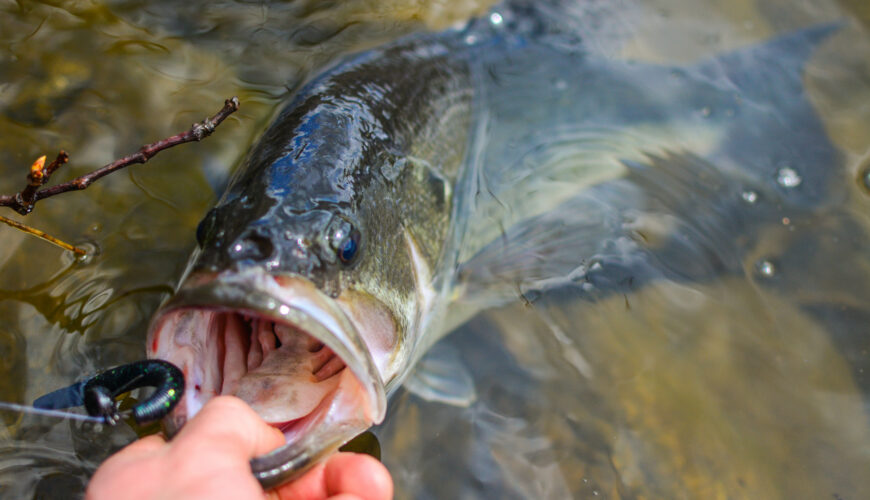Tactics
Walk and Stalk Antelope
October 15, 2025 •Brad Fenson
February 6, 2025
It’s a tale as old as time — two of the most sought-after freshwater fish in North America, smallmouth bass and largemouth bass, continue to captivate anglers with their aggressive strikes and fighting spirit. But while both are part of the black bass family, they differ in more ways than just their name. From biology to habitat and even the gear needed to catch them, knowing these distinctions could mean the difference between a successful day on the water and a frustrating one. Learn more about smallmouth bass vs. largemouth bass below.
At first glance, you can spot the differences between these bass cousins with a quick look at their mouths and coloration. Largemouth bass have a signature oversized jaw that extends well past their eye, while the smallmouth’s mouth stops around mid-eye level. Largemouths sport a dark green coloration with blotchy horizontal stripes, whereas smallmouth bass often have a bronze or brownish tint with vertical bars along their body.
Size-wise, largemouth bass tend to grow larger, often exceeding 10 pounds in prime conditions, whereas smallmouth bass max out around 6 to 7 pounds, though their feisty nature makes them feel much bigger on the line.
Understanding where each species thrives is crucial. Largemouth bass prefer warm, slow-moving waters with plenty of cover like submerged logs, lily pads, and thick vegetation. You’ll often find them lurking in murky ponds, reservoirs, and backwaters.
Smallmouth bass, on the other hand, prefer colder waters and are the warriors of rocky riverbeds and cool, clear lakes. They love strong currents, rocky shorelines, and deep underwater structures. This difference in habitat means your approach needs to be tailored to the species you’re after.
If you’re targeting largemouth bass, think big and bold. Topwater frogs, spinnerbaits, and soft plastic worms rigged Texas-style work wonders when flipping into dense vegetation. A medium-heavy rod with a fast-action tip paired with a baitcasting reel is the go-to setup for battling these bulky bruisers.
For smallmouth bass, finesse is often the name of the game. Light tackle with drop-shot rigs, tube jigs, and jerkbaits will get the job done in clear waters. A medium-light spinning rod with a 6-to-10-pound test line offers the sensitivity needed to detect their quick strikes while providing enough strength to handle their aerial acrobatics.
These are just a small selection of the possible tackle for largemouth and smallmouth bass. Anglers can catch either with a large variety of gear, and everyone has their own secret trick to catching bass. If you have your own you would like to share, let us know!
While largemouth bass can put on a show with their aggressive surface strikes, smallmouth bass take the crown when it comes to sheer stamina. Pound for pound, smallies are one of the hardest-fighting freshwater fish, often making multiple jumps and bulldogging their way to deeper water.
Both species offer an unforgettable angling experience, but whether you’re flipping for bucketmouths in the weeds or chasing bronzebacks in the rapids, understanding the nuances between smallmouth bass vs. largemouth bass can help you become a more successful and strategic angler. So, grab your rod, pick your target, and hit the water — either way, you’re in for a fight.
